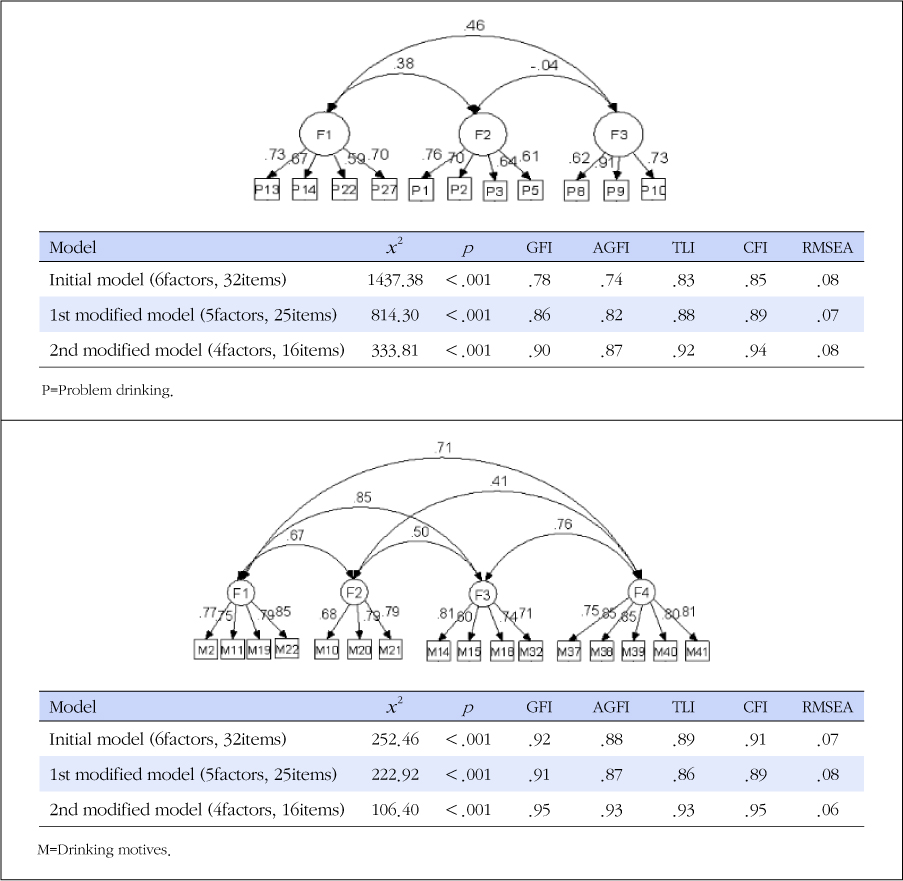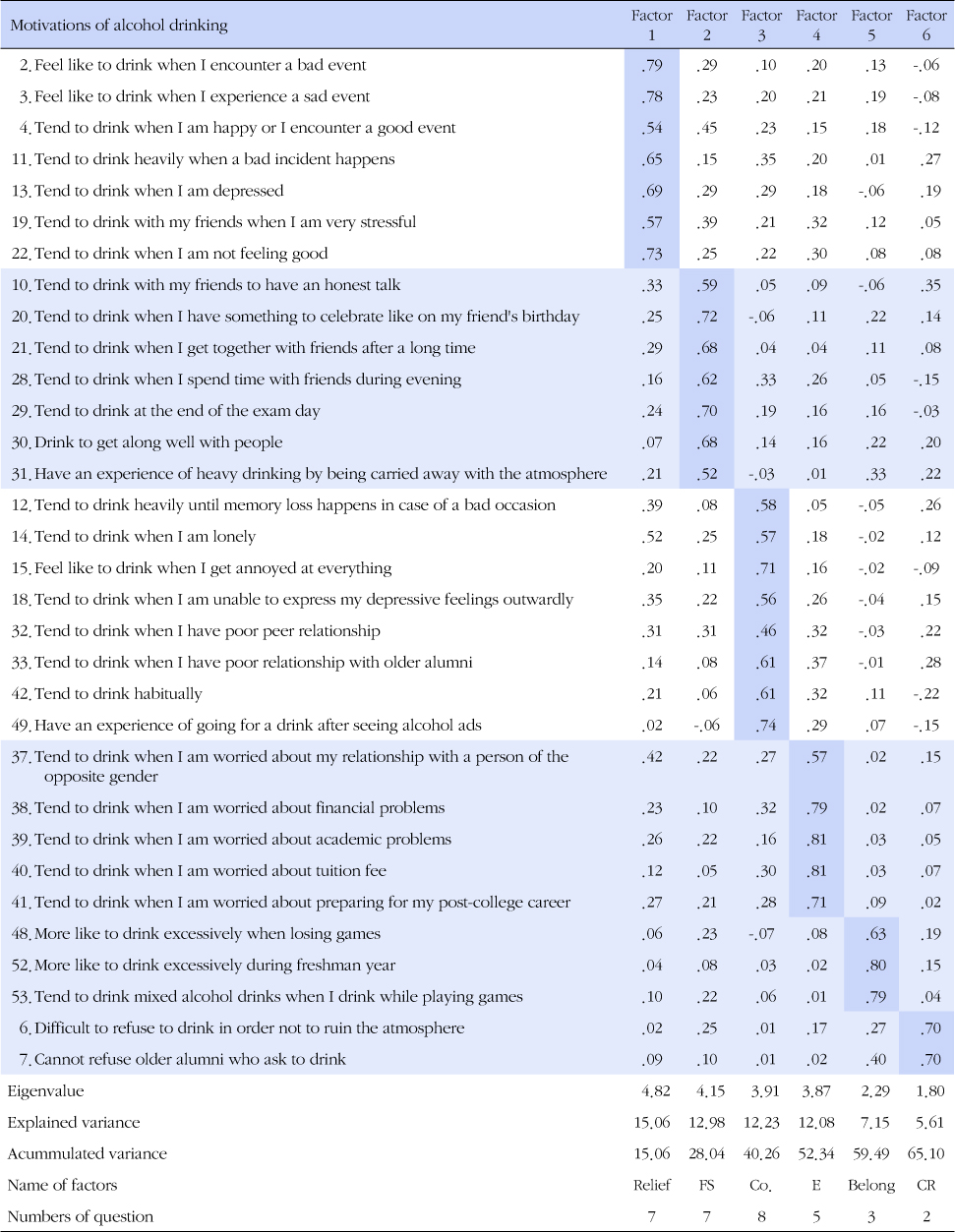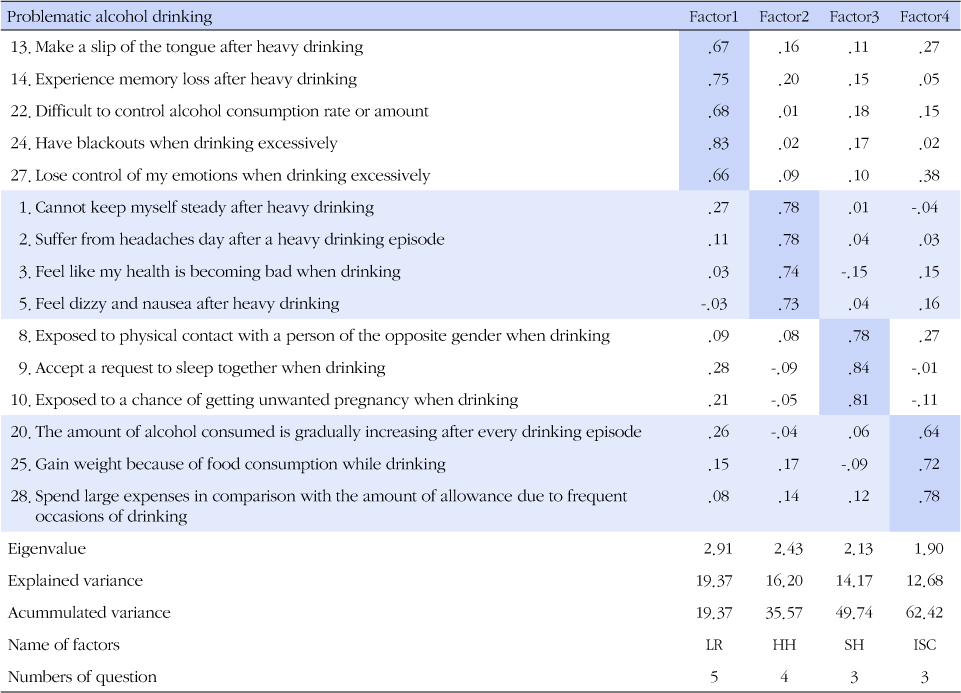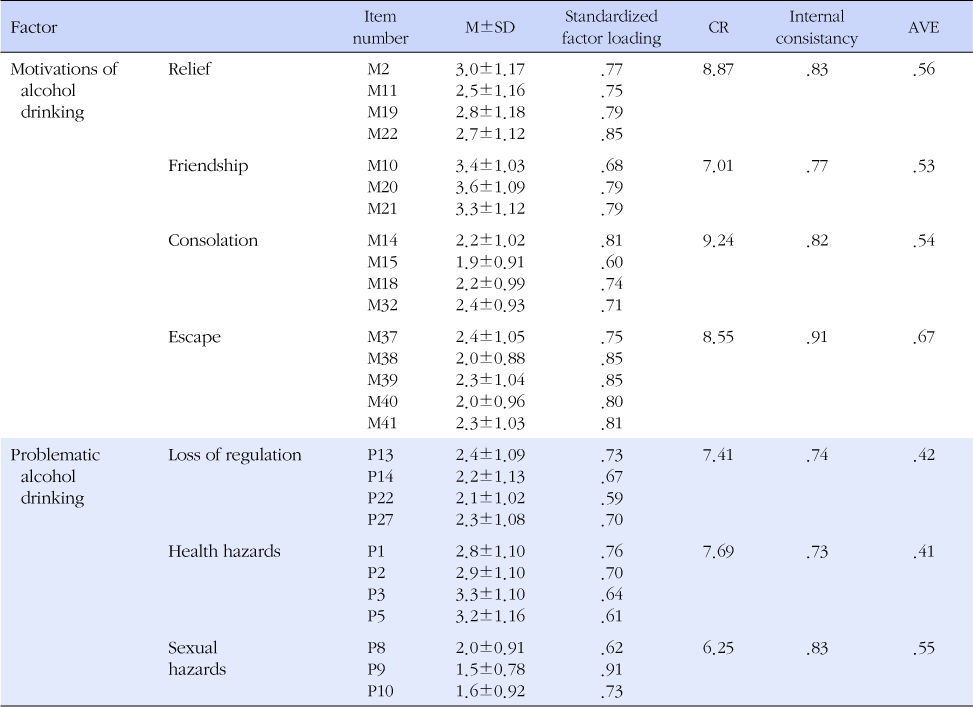References
1. Shim SW, Lee JW, Sohn YK. An Approach on drinking reduction campaign strategic establishment of Korean women's college students: An application of the theory of planned behavior. Korean J Advert Public Relat 2009;11(1):204–247.
2. Yang SH, Han KS. Drinking pattern, problem related drinking, perceived stress, ways of coping, and symptoms of stress of the female university students. J Korean Acad Nurs 2003;33(7):1057–1064.
3. Mun YH. Factors influencing drinking problems in female university students. J Korean Acad Community Health Nurs 2007;18(4):552–561.
4. Park KM, Rhee MK. Effects of perceived stress, social support and drinking motives on drinking behaviors among college students. Korean J Health Psychol 2005;10(3):277–293.
5. Kim HK, Choi ES, Ahn JS. Factors influencing alcohol consuming behavior of the female university students. Korean J Child Health Nurs 2004;10(2):205–216.
6. Ryu HS, Paek MJ. Factors influencing the drinking behavior in female university students. J Korean Acad Community Health Nurs 2012;23(3):307–315.
7. Park JS. A study on factors affecting problem drinking of university students. Korean Public Health Res 2000;26(4):393–413.
8. Do EY, Kim YH, Kim JH. Comparison of problem drinking and alcohol expectancy among female college students, workers and housewives. J Korean Alcohol Sci 2009;10(1):93–106.
9. Korea Centers for Disease Control and Prevention. Report No.: 11-1351159-000027-10. Korea health statistics 2010: Korea National Health and Nutrition Examination Survey report (KNHANES V-1) Seoul: Korea Centers for Disease Control and Prevention; 2011.
10. Kim IS, Lee YH. The effects of personality, social pressure and drinking motivation on drinking and drinking problems. Korean J Clin Psychol 2003;22(3):525–541.
11. Tak JK. The effects of personality traits and life events on drinking motives. Korean J Health Psychol 2000;5(1):73–83.
12. Cox WM, Klinger E. A motivational model of alcohol use. J Abnorm Psychol 1988;97(2):168–180.
15. Ooteman W, Koeter M, Verheul R, Schippers G, Van den Brink W. Development and validation of the amsterdam motives for drinking scale(AMDS): An attempt to distinguish relief and reward drinkers. Alcohol Alcohol 2006;41(3):284–292.
16. Doyle SR, Donovan DM, Simpson TL. Validation of a nine-dimensional measure of drinking motives for use in clinical application: The desired effects of drinking scale. Addict Behav 2011;36(11):1052–1060.
http://dx.doi.org/10.1016/j.addbeh.2011.06.012.
17. LaBrie JW, Hummer JF, Pedersen ER, Lac A, Chithambo T. Measuring college students' motives behind prepartying drinking: Development and validation of the prepartying motivations inventory. Addict Behav 2012;37(8):962–969.
http://dx.doi.org/10.1016/j.addbeh.2012.04.003.
18. Shin HW. The relationship between drinking motives and drinking problems. Korean J Psychol Soc Issues 1999;5(1):93–109.
19. Chung SK. Factors influencing problem drinking among female college students in Korea. Ment Health Soc Work 2007;27:176–198.
20. Kim JH, Kim MG, Hong SH. Writing scholarly papers with the structural equation modeling Seoul: Communication Books; 2009. p. 452.
21. Um MY, Cho SU. Scale development in social work practice Seoul: Hakjisa; 2005. p. 240.
22. Hair JF, Black WC, Babin BJ, Anderson RE. Multivariate data analysis 7th edth ed. New Jersey, NJ: Pearson; 2010. p. 800.
23. Kim GS. Structural equation modeling analysis Seoul: Hannarae Academy; 2011. p. 663.
24. Shin HW, Han SY. A preliminary study for developing drinking motives scale. Korean J Psychol Soc Issues 1999;5(1):77–92.
25. Yoon HM. Drinking behavior and factors that influence alcohol use among university students. J Hum Ecol 2000;3:1–15.
26. Cooper ML, Frone MR, Russell M, Mudar P. Drinking to regulate positive and negative emotions: A motivational model of alcohol use. J Pers Soc Psychol 1995;69(5):990–1005.
27. Lee SH, Chung SE. Drinking experiences of female college students. Korean J Womens Health 2011;12(1):1–19.




